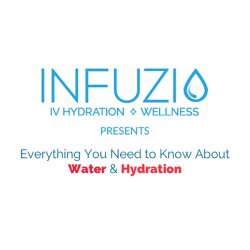AN IV SPECIALIST TREATS CLIENTS WITH IIV

Content create by-Haagensen Woodward
In IV treatment, the liquids are typically not offered through the nose or mouth yet directly right into the capillary. The usual intravenous route of shipment is utilized for administering liquids or for feeding those that can’t penetrate the mouth. If you go to a physician with a concern regarding IV therapy, she or he may suggest that you undertake this therapy instead of consuming fluids orally. To establish whether just click for source is an option for you, it is best to ask your physician initially.
Among the usual IV treatments is called parenteral nutrition. https://mgyb.co/s/KFam5 suggests that liquids are provided directly to the blood via the capillary. This is an ideal method when the individual receiving the IV treatment is struggling with hypovolemia or dehydration, as it can renew electrolytes and improve blood circulation. Many people pick IV treatment over parenteral nourishment since they supply much more nutrients at once; nonetheless, numerous IV liquids are reduced in nutrients than those discovered in parenteral nutrition remedies.
The goal of IV treatment is to change missing electrolytes as well as liquids in the body with electrolytes and liquids that replace the lost fluid. There are 3 fundamental manner ins which IV fluids can be provided: intravenous, intramuscular, and also subcutaneous. You may experience one or more negative effects from IV treatment, such as queasiness as well as throwing up, raised blood pressure, increased heart price, lowered blood circulation, headache, tiredness, cramps, looseness of the bowels, wooziness, shakes, feeling numb and pain, and high temperature. Unusual side effects include allergies, fatigue, moderate vomiting, low blood pressure, rigid muscular tissues and joints, and liver damage.
Intravenous fluids are typically prepared intravenously via a needleless catheter put right into the blood vessel. A couple of IV lines are gone to replace the fluids that have been intravenously given. If IV treatment is executed correctly, no one demand ever before really feel the pain of IV fluids or be worried about adverse effects. Intravenous dehydration happens when a person absorbs excessive fluid for his/her body. It happens most often when someone has taken fluid for rapid recovery or when somebody is recouping from illness and requires to replace liquids rapidly.
How Long Does A Session Of IV Hydration Therapy Take
Intramuscular treatment involves the management of drugs directly into the muscle mass. IV specialists hold the patient’s arm at its side and also inject the medication into the muscular tissue. This is a slow procedure that calls for more focus than the intravenous approach. Nevertheless, IV therapy supplies faster results than the intravenous technique. In IV treatment, IV liquids are also replaced with a sugar-water mixture to ensure that there is less threat of dehydration. It is usually used when a patient is seriously unwell or hurt and also can not eat or consume on his own.
Subcutaneous IV therapy entails the management of drugs straight into the tissue via the vein. A doctor or an iv therapist inject a drug right into the blood vessel to ensure that it gets in the muscle mass. An IV therapist likewise can pierce a capillary to carry out the medication. This is quicker than the intravenous treatment due to the fact that the blood will flow quicker through the capillaries. Nonetheless, it might cause extra problems, such as scarring, if it is done improperly.
What Is The Most Important Step When Discontinuing IV Therapy
Nutritional therapy entails providing nutrients straight to the body. This sort of treatment is performed via tubes that are put under the skin. Common nutritional therapies include cod liver oil, oral calcium supplements, flaxseed supplements, and also vitamin therapy. Going through nutritional therapy commonly leads to improved health and to decreased disease.
How Long Does IV Drip Therapy Take
A lot of the moment, IV treatment takes place in hospitals. Yet often, a person may require to be dealt with in a house. Residence treatment is provided by certified and also licensed healthcare employees. The treatment typically consists of carrying out IV fluids and also keeping an eye on the person’s problem. The most common IV fluids utilized are glucose-based or insulin-based liquids. If an individual has chronic problems, the IV fluids may need to be replaced extra often.






